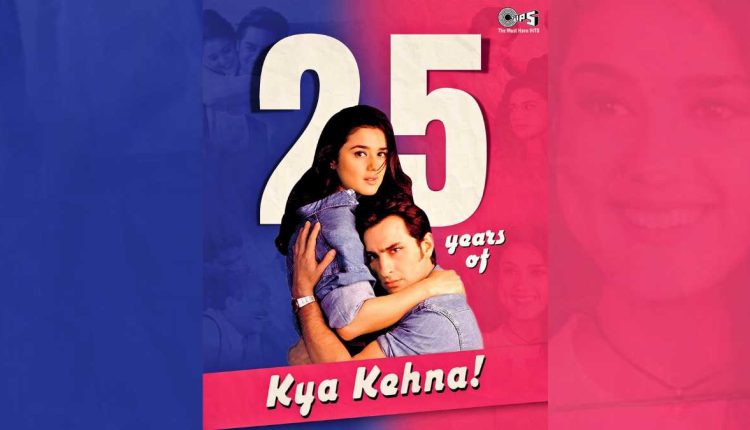Kya Kehna turns 25: The film that changed what it meant to be ‘family cinema’ in India
Kya Kehna wasn’t just a film — it was a social jolt wrapped in the softness of mainstream Hindi cinema. At a time when family films revolved around saccharine tales of sacrifice or action-packed morality plays, this one walked straight into the dining rooms of middle-class India with a question mark. Directed by the late Kundan Shah, produced by Tips, and featuring a fresh-faced Preity Zinta alongside Saif Ali Khan and Chandrachur Singh, Kya Kehna opened a door that had always existed — people just hadn’t dared to walk through it on screen.
Released in May 2000, Kya Kehna struck a chord so deep that it transformed whispered anxieties into prime-time discussions. It told the story of Priya Bakshi, a spirited young woman who finds herself pregnant out of wedlock, and chooses to keep the baby. The film refused to paint her as either a victim or a rebel — she was both ordinary and extraordinary, caught in a whirl of judgement, love, and self-determination. That complexity made the film emotionally accessible, even to those who weren’t ready for its premise.
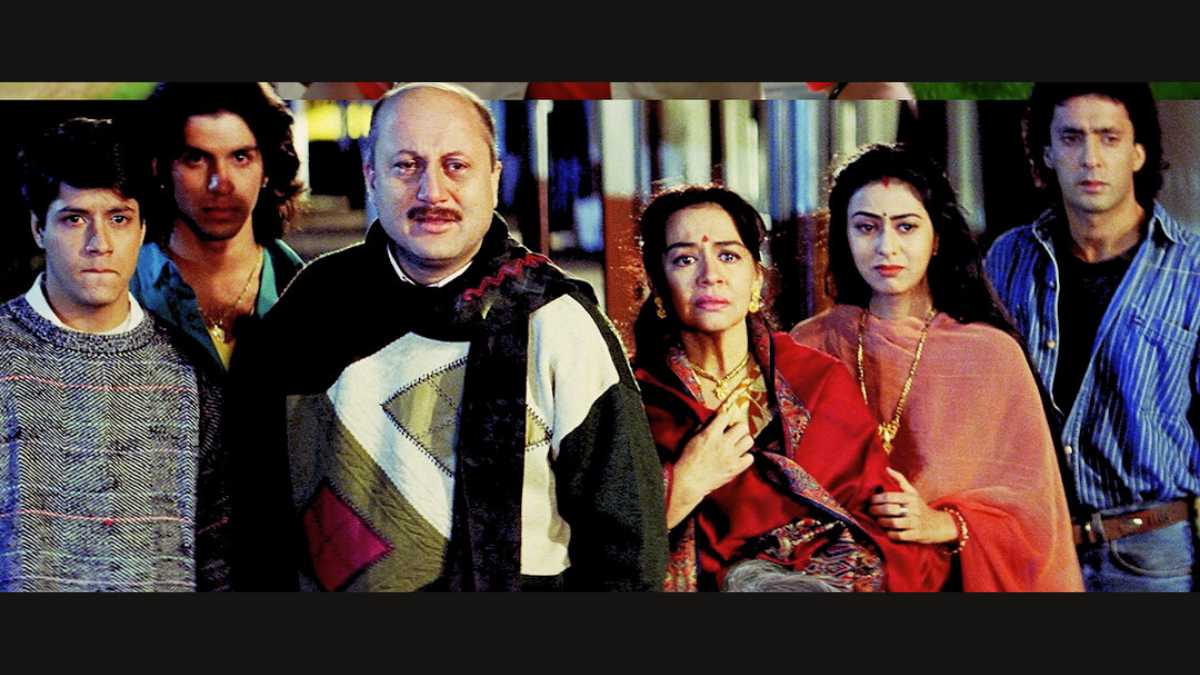
A daring departure by a director of satire
For director Kundan Shah, best known for the acerbic comedy Jaane Bhi Do Yaaro, Kya Kehna was a surprising pivot. It lacked the overt political satire of his earlier work, yet retained a subversive undertone. Shah chose sentimentality as his language, not irony — a decision that disarmed critics and seduced audiences. Tips Films, a production house known more for its music-oriented ventures than message-driven cinema, took a risk that paid off handsomely. At the time, both Shah and the production house were seeking reinvention. Kya Kehna was that pivot, meeting commercial success with cultural conversation.
The timing was vital. The early 2000s were a period of transition — India had liberalised, cable television had invaded living rooms, and new ideas were being cautiously entertained by a conservative majority. Against this backdrop, a film about teenage pregnancy, parental disapproval, and social stigma could easily have turned preachy or been buried. Instead, it succeeded because it dared to smile. Shah’s choice to treat Priya’s journey with empathy rather than sensationalism helped the story rise above its potential melodrama.
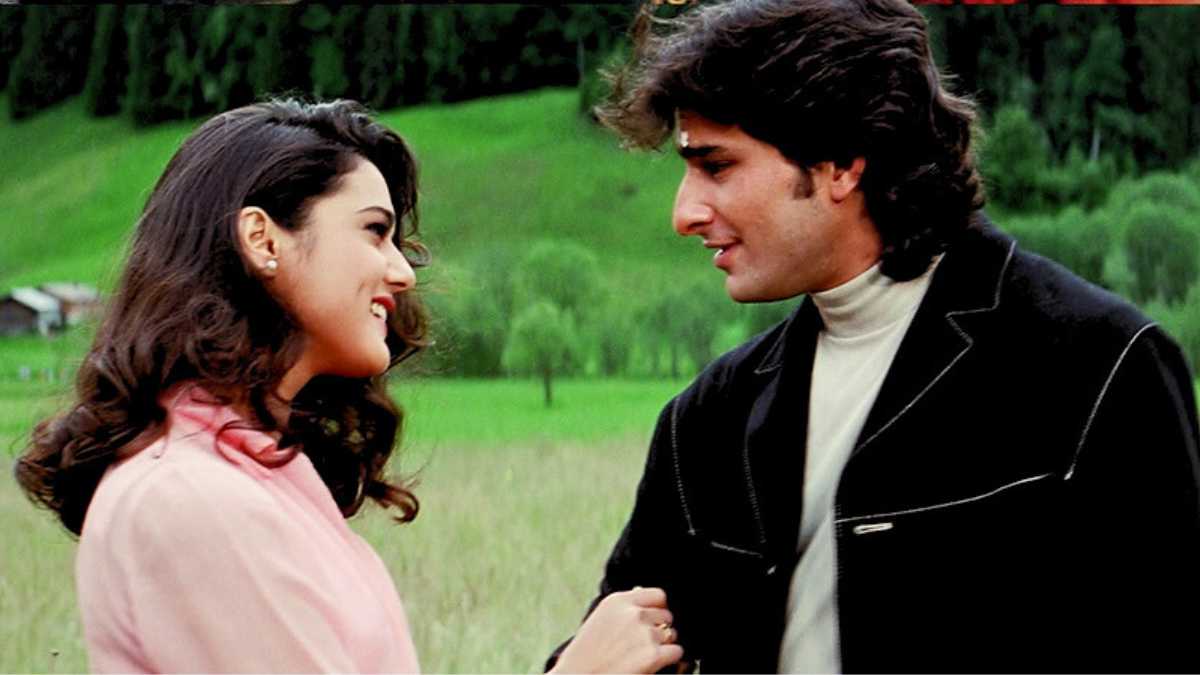
The business acumen of Kumar Taurani and Ramesh Taurani
Behind the emotional impact and cinematic freshness of Kya Kehna stood the formidable business minds of Kumar Taurani and Ramesh Taurani — founders of Tips Industries, one of the most influential production and music labels in Bollywood. Their decision to back a film that tackled teen pregnancy and societal hypocrisy was far from conventional. In a market dominated by star vehicles and formulaic plots, the Taurani brothers chose to invest in a story that foregrounded a young woman’s story, anchored in middle-class values.
But this wasn’t a random gamble. It was the result of sharp market intuition and strategic positioning. By pairing a bold subject with relatable characters, accessible music, and strong family appeal, the Tauranis ensured the film would resonate across demographics. They understood that while the premise was risky, its heart — and its heroine — would connect with audiences craving sincerity over spectacle.
The film struck a perfect chord — commercially, culturally, and critically. As music barons, the Tauranis also leveraged their deep understanding of soundtracks as a business asset. The songs were released well ahead of the film, building anticipation and embedding emotional recall in the minds of listeners. By the time audiences entered cinemas, the melodies already felt like memories.
Their instincts were vindicated when the film became one of the most successful hits of its time — not just at the box-office, but also as a topic of conversation in homes, news media, and social circles. In hindsight, Kya Kehna stands as a masterclass in how commercial foresight and creative courage, when fused well, can redefine what a “family entertainer” truly means.
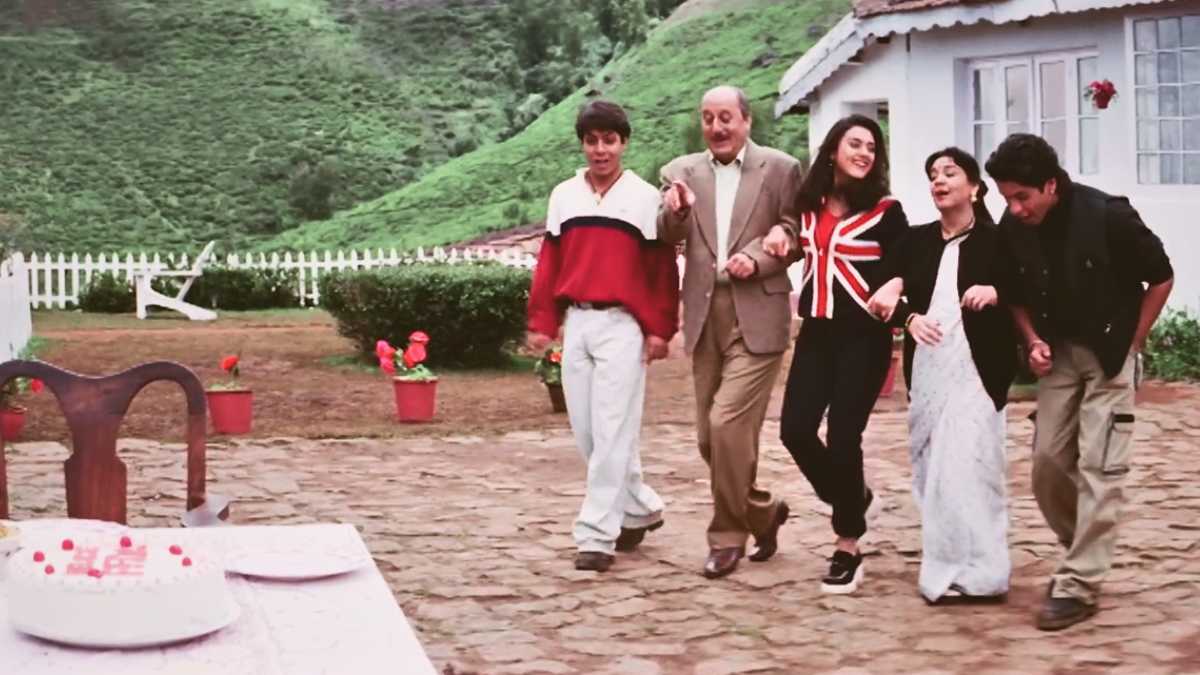
Characters born out of an awakening society
Priya wasn’t a flag-bearer of feminism; she was a girl next door who smiled wide, laughed louder, and danced with abandon. That ordinariness is what made her revolutionary. She emerged from the same world as her audience — a world of arranged marriages, and honourable reputations. Saif Ali Khan played Rahul, the charming but irresponsible lover-boy who shirks responsibility. Chandrachur Singh was the dependable friend Ajay, quietly in love with Priya. Each character was drawn not with hyperbole but with everyday details. They lived in bungalows, studied in colleges that looked like actual colleges, and had conversations that echoed in homes across India.
Among the film’s many emotional anchors were the endearing performances of Farida Jalal and Anupam Kher, who brought warmth, nuance, and quiet strength to their roles as Priya’s parents. Farida Jalal, with her trademark empathy, portrayed a mother torn between societal norms and maternal instinct, while Anupam Kher’s measured and wonderful portrayal of the loving father offered a powerful arc — from stern disapproval to heartfelt acceptance. Together, they embodied the generational conflicts and eventual evolution that lay at the heart of Kya Kehna, grounding the story in familial realism and emotional credibility.
Here, Anupam Kher’s portrayal of the father deserves particular attention — not only for its emotional depth but also for the charming lightness he brought to the early part of the film. In the initial sequences, his character exudes a Charlie Chaplin-like warmth, waddling between protective sternness and comic timing. There’s a moment where his disapproval is masked by exaggerated gestures and quiet exasperation, drawing smiles even as he reflects a traditional father’s discomfort with his daughter’s independence. These Chaplinesque touches make his later transformation — from a man embarrassed by social scrutiny to one who proudly supports his daughter — all the more powerful. Kher’s performance captures a full emotional arc with endearing honesty, making him one of the film’s most quietly revolutionary figures.
Even the film’s geography contributed to its meaning. The scenic calm of the locations, the college canteens, the modest urban homes — all painted a picture of a world at peace with itself until a woman made an unapproved choice. Movement — both physical and emotional — plays a central role. Priya’s defiance is framed not as rebellion but as growth. Her journey from student to mother is a literal arc of maturity, underscored by the visual motif of her expanding world: from the home to the public eye, from ridicule to respect.

A tonal shift that mirrored society’s evolving moral codes
The second half of the film — when Priya publicly asserts her right to become a mother — feels like it belongs to a different genre. What begins as youthful romance evolves into a public reckoning. The mood darkens, the stakes rise, and the soft edges of the narrative sharpen. It’s a transformation that reflects a deeper shift — the film stops asking whether Priya made a mistake and starts asking why society gets to decide that.
There are echoes of older Bollywood films — the moral anguish of Aradhana, the righteous indignation of Damini — but Kya Kehna recontextualises them with a 21st-century gaze. It doesn’t vilify its men so much as expose their fragility. Rahul is not a villain, but a product of patriarchy. Ajay is not a saint, but someone who evolves. These shades of grey were rare for that period’s family entertainment.
Music that told the story
In Kya Kehna, music was not an accessory — it was an emotional current running through the film’s soul. Rajesh Roshan’s compositions brought a rare sincerity to the storytelling, allowing the film’s most delicate themes to unfold with grace and power.
“Aye Dil Laya Hai Bahaar”, sung by Kavita Krishnamurthy and Hariharan, opened the film with an air of innocence and promise. Set against scenes of college and carefree youth, it captured the heady optimism of first love. The song’s light orchestration and lyrical warmth made it instantly endearing, setting the tone for the emotional highs to come.
“In Kadmon Ke Neeche”, rendered soulfully by Alka Yagnik and Kumar Sanu, served as a poignant expression of longing and quiet despair. It reflected the tension between love and social judgment, resonating with audiences who had witnessed or experienced silent emotional battles of their own. Its melancholic cadence offered a space for introspection — both for the characters and for the viewers.
Then there was “Pyaara Bhaiya Mera”, a sentimental ode to sibling love. Sung with tenderness by Alka Yagnik and Kumar Sanu, it became a favourite among family audiences. The song underscored the bond between Priya and her brother, reinforcing one of the film’s core messages — that unconditional support often comes not from society, but from within the home.
Together, these and other tracks didn’t merely accompany the narrative — they elevated it. Each song became a touchpoint for emotion, mirroring the characters’ internal shifts and societal pressures. In an era when music often leaned towards flash and formula, Kya Kehna offered something more enduring: songs that could be felt deeply, remembered fondly, and sung quietly in solitude.
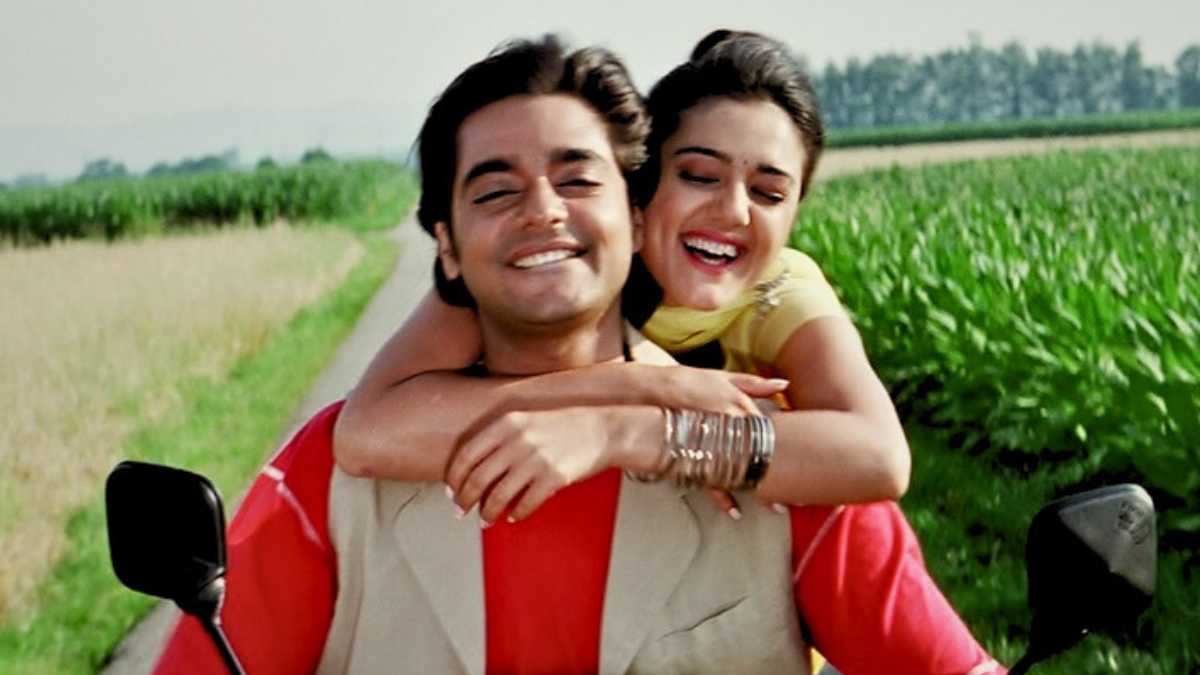
The writing that stitched everything together
Honey Irani’s story and screenplay deserve immense credit. It married simplicity with sharpness. The dialogue was never overwrought — it trusted the audience’s intelligence. The film asked uncomfortable questions with a smile, and Irani’s writing made sure they echoed long after the credits rolled.
What’s remarkable is how the film’s tone managed to be idealistic without being naive. Its realism was understated, embedded in everyday choices — not grand gestures. It was this faith in the audience, in their capacity to care, that made the screenplay so effective.

The hype machine behind the message
Also integral to the film’s success was its news media PR campaign, steered by Bollywood publicist Dale Bhagwagar. At a time when the industry operated through informal whispers and last-minute press meets, Bhagwagar brought clarity, structure, and strategic aggressive media traction. He ensured that every media house spoke about the film’s bold theme, while also highlighting Preity Zinta’s charm and the wholesome appeal of the soundtrack. His media outreach blended instinct with data, ensuring that the film stayed in the news cycle from pre-release to box-office triumph. Today, Dale Bhagwagar is regarded as Bollywood’s most trusted publicist — a strategist whose foresight and flair make him leagues ahead in the field.

A coming-of-age classic that made Indian audiences rethink womanhood
Twenty-five years later, Kya Kehna’s legacy is that it still resonates — not because it shocked, but because it soothed. It took a taboo and gave it a face, a family, a name, and emerged a box-office superhit. What has aged gracefully is its optimism. What seems prophetic is its trust in the individual over the institution. And what remains timeless is its belief in love that doesn’t ask for permission.
The film didn’t just challenge morality — it redefined what could be moral. It didn’t shout — it spoke. And in that gentle speaking, it altered how an entire generation listened.

